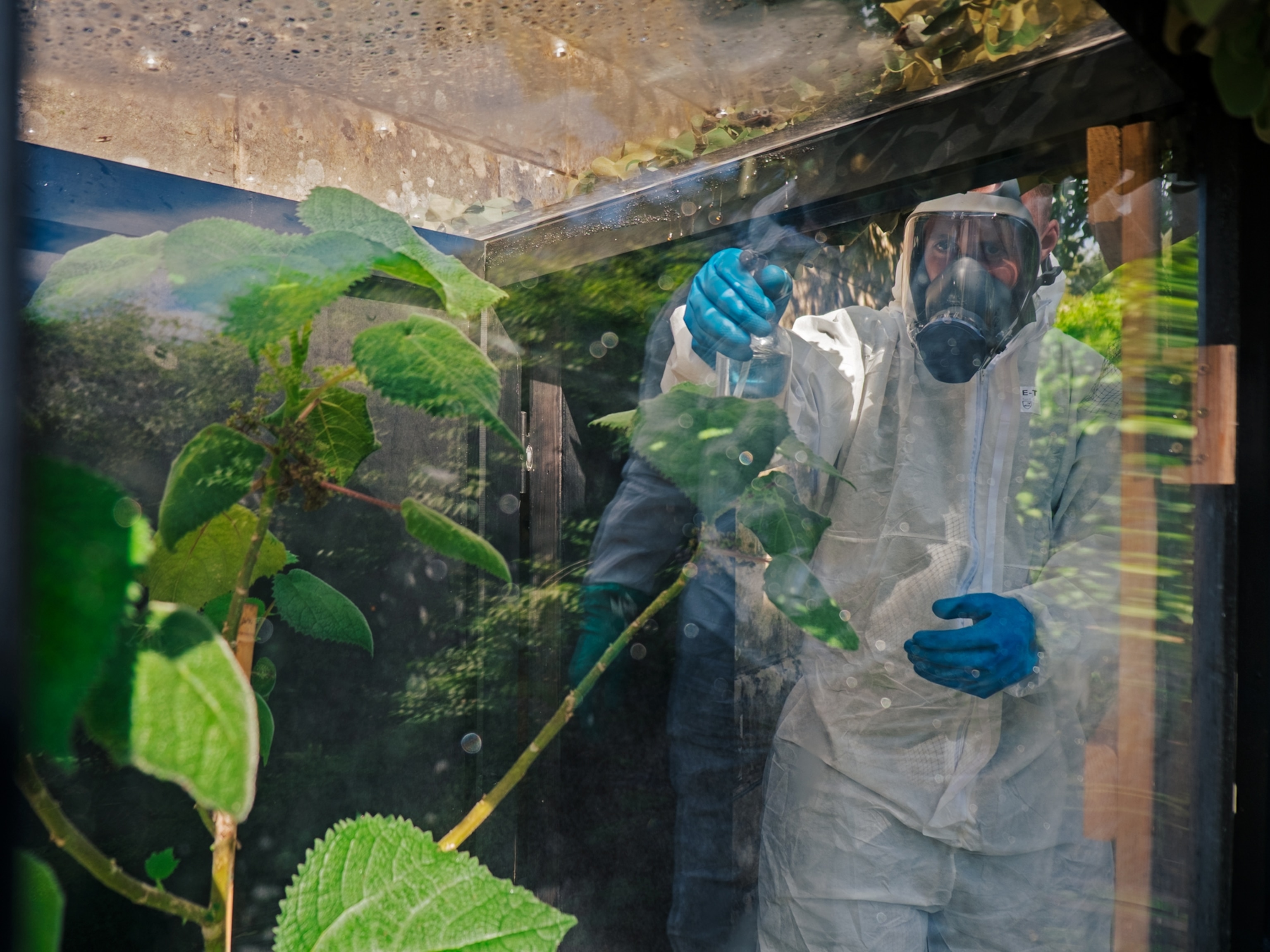
Oldest Known Fossil of Flowering-Plant Sex Found in Amber
The hundred-million-year-old amber contains flowers frozen in the act of reproduction.
Getting caught "doing it" is embarrassing enough, but imagine being frozen in flagrante delicto for a hundred million years.
That's what happened to a species of flowering plant encased in amber originally collected in Myanmar (Burma) in 2001, a new study says. (See "Oldest Fossil of Mating Insects Found; Sex Positions Haven't Changed.")
The Cretaceous-period flower, named Micropetasos burmensis, is made of bunches of very tiny flowers no more than 0.03 inch (a millimeter) wide.
When the ancient tree sap rolled over the plant, one of those flowers was captured in the act of making seeds. That is, a pollen tube had entered a part of the flower called the stigma, where pollen germinates. (Learn about the parts of a flower.)
The process is very similar to how modern-day flowering plants reproduce, said study co-author George Poinar, a biologist at Oregon State University in Corvallis.
Previous researchers have found pollen tubes before, but none that were caught entering the stigma, he said.
The intact presence of such delicate structures also demonstrates amber's ability to preserve fragile body parts, Poinar added. "Here you have a hundred-million-year-old flower that looks like it was blooming last week." (See "Pictures: 'Incredible' Dinosaur Feathers Found in Amber.")
One of a Kind?
Although the plant is now extinct, it's also a newly discovered species, Poinar said. It's so different from anything researchers have seen before that the newfound flower doesn't seem to have any modern-day relatives.
The sheer number of flowers encased in amber is also quite exciting, said Poinar, whose study was published in December in the Journal of the Botanical Research Institute of Texas.
"Here we have 18 flowers on one sprig," he explained. "That number of flowers has never been seen before in a Cretaceous [flowering plant]."
Previous finds from this era of the dawn of flowering plants contained very few flowers—usually one or two in a fossil—that could be attributed to the same species, according to the study.
Having so many flowers from the same plant preserved together will allow researchers to study the flowers from different angles. And since the flowers are in various stages of growth, this will enable Poinar and colleagues to analyze how the flowers matured.
"Here's something which hasn't been seen before, and it doesn't fit anything we know of today."
Follow Jane J. Lee on Twitter.




